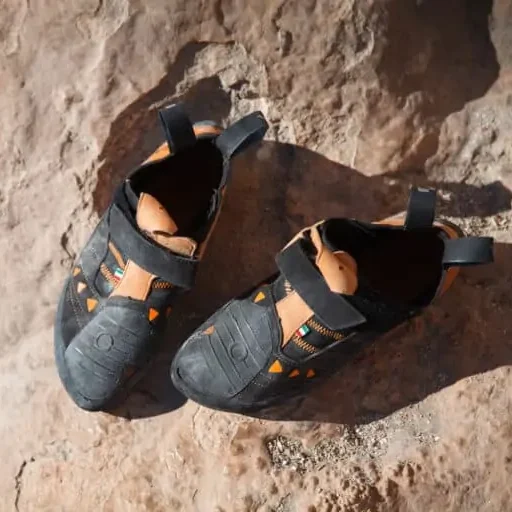Các đường leo núi

Vui lòng không leo bên dưới!!!
Có thể bạn tìm được một chỗ nghỉ ngơi sau những lần leo đầy nỗ lực hay thấy một đường leo thú vị mà bản thân muốn thử sức nhưng hãy chú ý rằng: đứng hay leo ngay bên dưới một người khác là điều không nên. Tại sao ư? Bởi vì nếu họ trượt tay và rơi xuống, bạn có thể bị va chạm và nhận được một "cái ôm" bất ngờ.
Phát hiện mối nguy hiểm, hãy cho chúng tôi biết!
Nếu bạn thấy bất cứ điều gì có vẻ hơi khác thường, đừng ngần ngại mà hãy cho nhân viên thân thiện của chúng tôi biết. Chúng tôi luôn lắng nghe và chú trọng đến những điều đó để đảm bảo rằng HCH là một địa điểm an toàn và thú vị nhất.
Sự an toàn
Sự an toàn của bạn là ưu tiên hàng đầu của chúng tôi tại HCH
Tại Hà Nội Climbing Hub, chúng tôi muốn bạn có một trải nghiệm thật thú vị khi chinh phục những bức tường leo núi, vì vậy chúng tôi đã thực hiện tất cả các bước cần thiết để đảm bảo sự an toàn của bạn được đặt lên hàng đầu.
Những cú tiếp đất nhẹ nhàng
Chúng tôi có những tấm đệm siêu mềm để bảo vệ an toàn cho bạn, sẵn sàng đón lấy bạn một cách nhẹ nhành như đang trao đến bạn một cái ôm thật chặt sau khi bạn kết thúc một lần chinh phục đầy kì thú trên các tường leo. Vì vậy, không cần lo lắng về những cú ngã - hãy chỉ tập trung vào việc vui chơi thôi!
Leo xuống như một người leo núi chuyên nghiệp, bất cứ khi nào có thể
Nhảy xuống có vẻ là một động tác khá thú vị và "cool ngầu", nhưng sẽ an toàn hơn nếu bạn leo xuống như một "chuyên gia". Tin tôi đi, cơ thể của bạn sẽ cảm ơn bạn vì điều đó đấy.
Chia sẻ không gian
Hãy nhớ rằng vẫn còn những người leo núi khác xung quanh bạn. Hãy chia sẻ không gian với họ để bạn và họ cùng tỏa sáng. Chúng ta ở đây để hỗ trợ lẫn nhau và cùng nhau có những khoảng thời gian và trải nghiệm đáng nhớ.
Người tạo đường
Điều kì diệu phía sau những cuộc leo núi: Hé lộ quá trình thiết lập các mấu đá
Stepping into the heart of Hanoi Climbing Hub, you’ll be greeted by towering walls adorned with an array of colourful holds, each meticulously placed to challenge you, inspire you, and spark your inner climbing enthusiast. But have you ever wondered about the masterminds behind these routes? The answer lies in the realm of our route setters, passionate individuals who dedicate their expertise to crafting these climbing adventures.
Seasoned climbers themselves, our route setters draw upon years of experience, knowledge, and a deep understanding of human movement to create routes that are not only challenging but also immensely enjoyable. Their passion for the sport is evident in every hold they place, every sequence they design, and every creative twist they introduce.
Collaboration is at the heart of the route setting process. Our team of setters works together, sharing ideas, brainstorming challenges, and refining routes until they reach the pinnacle of climbing perfection. This collaborative spirit fosters a sense of camaraderie and ensures that each route is a testament to their combined expertise.
While inspiration is abundant in the world of climbing, there are times when even the most seasoned route setter finds themselves in need of a creative spark. This is where teamwork truly shines. By sharing their vast technical knowledge and diverse climbing styles, our setters embark on a journey of exploration, pushing the boundaries of creativity and innovation.
And now, for the fun part! Did you know that there’s a playful way to surprise and even delight your friendly route setter? It’s all about conquering the route in a way they never anticipated. Think outside the box, try unexpected sequences, and let your creativity run wild. You might just discover a new twist that adds an extra layer of excitement to the climb.
So, the next time you find yourself scaling our walls, take a moment to appreciate the invisible hands that have meticulously crafted your climbing adventure. Our route setters are the unsung heroes who transform ordinary walls into extraordinary challenges, ensuring that every climb is an unforgettable experience.
Now, lets talk about different kinds of holds
Journey into the World of Climbing Holds: Embracing the Variety of Shapes and Sizes
As you embark on your bouldering adventure, you’ll be greeted by a diverse array of holds, each with its unique shape, size, and challenge. From the comforting embrace of jugs to the enigmatic mystery of slopers, these versatile features
will become your companions on your climbing journey.
Crimps
Crimps are the ultimate test of finger strength and technique. These small, sharp holds demand precise positioning and a strong grip to conquer. While crimps may seem daunting at first, mastering their nuances will open up a world of challenging and rewarding routes.
Jugs
Jugs are the most welcoming and beginner-friendly type of hold, offering a large, comfortable surface area to grip. These gentle giants provide a secure grasp, allowing you to focus on technique and movement without worrying about slipping or losing your grip.
Slopers
Slopers are the mystery masters of the climbing world, offering almost no positive features to grip. These smooth, angled surfaces challenge climbers to find creative and unconventional ways to hold on. Conquering a sloper will not only test your physical strength but also your problem-solving skills and adaptability.
Pockets
Pockets are hidden treasures within the climbing landscape, offering a secure and comfortable grip within the depths of the wall. These holds can be tricky to find, but once discovered, they provide a welcome respite from the challenges of other hold types.
Pinches
Pinches demand a unique grip, engaging the pinching muscles of the hand and forearm. These holds test your grip strength and endurance, pushing you to find balance and efficiency in your movements.
Volumes
Volumes are three-dimensional holds that push the boundaries of creativity and challenge. These sculpted features demand unconventional grips and problem-solving skills, adding an extra layer of excitement and complexity to climbing routes.
As you progress through your bouldering journey, you’ll discover the nuances of each hold type, learning how to grip them effectively and harness their power to propel you upwards. What once seemed like an impossible edge will gradually become a familiar friend, a stepping stone in your climbing progression.
So, don’t be intimidated by the variety of holds you’ll encounter. Embrace them as opportunities to expand your climbing vocabulary, to strengthen your grip, and to unlock new levels of skill. After all, it’s through these interactions with the holds that you’ll transform ordinary walls into extraordinary climbing adventures.
Đồ dùng cần thiết khi leo núi
Rock climbing shoes
Rock climbing shoes are specially made shoes that help push your toes together. This allows you to put your body weight onto the tip of your toes. Are they meant to hurt? Short answer, Yes. Do new shoes cause a lot of pain…Also yes. Beginners can rent shoes that should fit snuggly. Once you’ve decided to continue rock climbing, it is recommended that you buy your own pair. Our experienced staff will help guide you on your purchase.
Chalk Bag
Climbing with sweaty hands makes for a bad experience. Sprinkling some chalk on your hands dries them out with allows you to grip the holds and climb better. Beginners can rent chalk bags to get started. It’s important to use moisturiser on your hands after climbing as your skin can become dried out.

Beginner guide
Just the tips
New to Climbing? Here Are Some Helpful Tips to Get You Started
Beginner Tips for Bouldering
Bouldering is a great way to get some exercise, have fun, and challenge yourself. It’s also a great way to meet new people. If you’re new to bouldering, there are a few things you can do to get started and make sure you have a safe and enjoyable experience.
Start with the basics:
Before you start climbing, it’s important to learn the basics of bouldering technique. This includes how to fall safely, how to use your feet effectively, and how to conserve energy. You can learn these basics by taking a beginner climbing class or by watching instructional videos online.
Start on easy routes:
When you’re first starting out, it’s important to start on easy routes that are within your climbing ability. This will help you build your confidence and strength before you try more difficult routes.
Don’t be afraid to ask for help:
There are always other climbers who are willing to help beginners. If you’re not sure how to do something, just ask for help. There are also many friendly and experienced staff members at most bouldering gyms who can help you get started.
Have fun!

